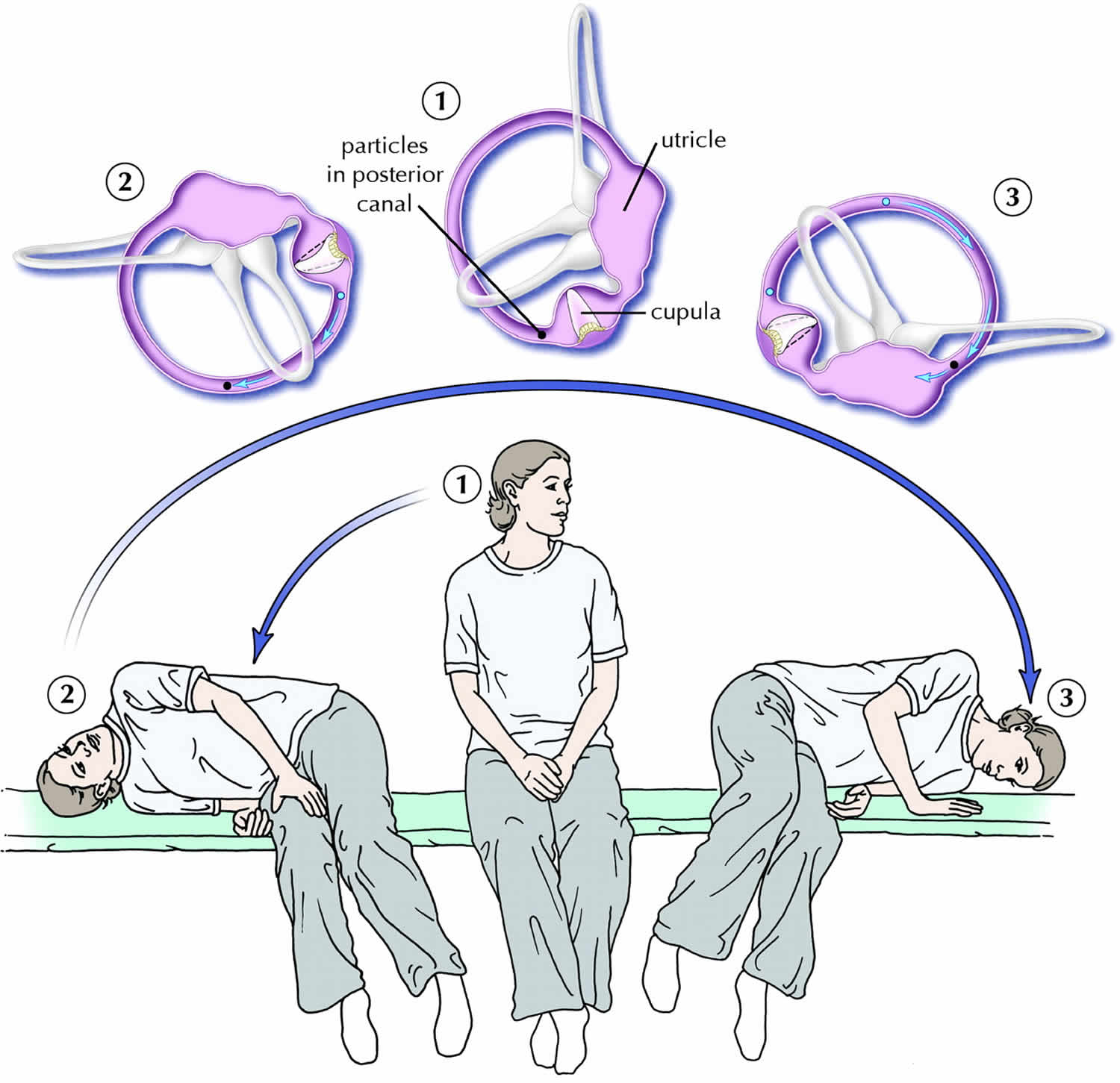Vertigo problem – Vertigo is a common problem that can cause dizziness, nausea, and imbalance. It can be caused by a variety of factors, including inner ear disorders, neurological conditions, and medications. In this article, we will discuss the different types of vertigo, their causes and symptoms, and the treatment options available.
Vertigo can be a debilitating condition, but it is usually treatable. If you are experiencing symptoms of vertigo, it is important to see a doctor to rule out any underlying medical conditions and to get the appropriate treatment.
Definition and Overview: Vertigo Problem

Vertigo is a sensation of dizziness or disorientation, often accompanied by a feeling of movement or spinning. It can be caused by a variety of factors, including inner ear problems, neurological disorders, and certain medications.
There are two main types of vertigo: peripheral and central. Peripheral vertigo is the most common type and is caused by problems in the inner ear, which is responsible for balance. Central vertigo is caused by problems in the brain, specifically in the cerebellum or brainstem, which are responsible for coordinating movement and balance.
Vertigo is a common problem, affecting up to 40% of people at some point in their lives. It is more common in women than in men and is most likely to occur between the ages of 40 and 60.
Symptoms and Diagnosis
Vertigo is a condition that causes a sensation of dizziness or spinning, often accompanied by nausea and imbalance. It can be a distressing and debilitating condition, affecting daily life and activities.
Diagnosis of vertigo involves a thorough physical examination and medical history review. Your doctor will assess your symptoms, including the duration, severity, and any associated factors. They may also perform tests such as the Dix-Hallpike maneuver, which involves moving your head and neck in specific positions to trigger vertigo.
Vertigo, a distressing condition that causes dizziness and balance issues, can be debilitating. If you experience sudden attacks of vertigo, seeking prompt vertigo attack treatment is crucial. Effective treatments can alleviate symptoms and restore your equilibrium, allowing you to manage vertigo problems more effectively.
Differential Diagnosis, Vertigo problem
Differential diagnosis is crucial in diagnosing vertigo, as it helps rule out other underlying conditions that may mimic its symptoms. These conditions can include:
- Benign paroxysmal positional vertigo (BPPV): A common cause of vertigo, triggered by certain head movements.
- Ménière’s disease: A disorder of the inner ear that causes episodes of vertigo, hearing loss, and tinnitus.
- Vestibular neuritis: An inflammation of the vestibular nerve, which connects the inner ear to the brain.
- Central vertigo: Vertigo caused by problems in the brain, such as stroke or multiple sclerosis.
By ruling out other potential causes, your doctor can accurately diagnose vertigo and recommend appropriate treatment options.
Causes and Risk Factors

Vertigo can arise from various causes, including inner ear disorders, neurological conditions, and medications. Understanding these causes and associated risk factors can help individuals better manage and prevent vertigo episodes.
The most common cause of vertigo is inner ear disorders, such as benign paroxysmal positional vertigo (BPPV), which occurs when tiny calcium crystals in the inner ear become dislodged and move into the canals responsible for balance.
Risk Factors
Certain factors can increase the risk of developing vertigo, including:
- Age: Vertigo is more common in older adults due to age-related changes in the inner ear and nervous system.
- Medical conditions: Conditions like migraines, diabetes, and high blood pressure can increase the risk of vertigo.
- Lifestyle habits: Smoking, excessive alcohol consumption, and poor diet can contribute to vertigo.
Specific Triggers
Specific situations or conditions can trigger vertigo episodes, such as:
- Head movements: Certain head positions or movements can trigger BPPV.
- Loud noises: Sudden loud noises can trigger vertigo in some individuals.
- Stress: Emotional stress or anxiety can worsen vertigo symptoms.
Treatment Options

Vertigo can be managed through various treatment approaches, including medical management, physical therapy, and surgical interventions. The specific treatment plan depends on the underlying cause and severity of the condition.
Medical management involves the use of medications to alleviate symptoms. Common medications include:
- Antiemetics: To reduce nausea and vomiting
- Vestibular suppressants: To inhibit the overactivity of the vestibular system
- Anticholinergics: To reduce dizziness and motion sickness
It’s important to note that these medications may have side effects such as drowsiness, dry mouth, and blurred vision.
Physical Therapy
Physical therapy plays a crucial role in managing vertigo symptoms. Exercises aim to improve balance, reduce dizziness, and strengthen the vestibular system. Common exercises include:
- Balance retraining exercises: To enhance stability and coordination
- Eye exercises: To improve eye-head coordination
- Vestibular rehabilitation exercises: To stimulate and retrain the vestibular system
Prevention and Management
Managing vertigo involves preventing episodes and implementing strategies to cope with the condition. Lifestyle modifications, assistive devices, and medical interventions can all play a role in improving symptoms and enhancing overall well-being.
Lifestyle Modifications
- Avoid Triggers:Identifying and avoiding triggers that induce vertigo, such as certain head movements, stress, or caffeine, can help prevent episodes.
- Maintain a Healthy Diet:A balanced diet rich in fruits, vegetables, and whole grains can provide essential nutrients that support balance and reduce inflammation.
- Engage in Regular Exercise:Physical activity, especially exercises that improve balance and coordination, can strengthen the vestibular system and reduce the risk of falls.
Assistive Devices
For individuals with persistent vertigo, assistive devices can provide stability and support. These include:
- Canes:A single cane or walking stick can enhance balance and provide support during walking.
- Walkers:Walkers offer a wider base of support, providing greater stability and reducing the risk of falls.
- Vestibular Rehabilitation:This specialized physical therapy program involves exercises designed to improve balance, reduce dizziness, and enhance the function of the vestibular system.
Related Conditions and Complications
Vertigo is often associated with other conditions that can affect the vestibular system or the brain. Understanding these related conditions and their potential complications is crucial for effective diagnosis and management.
It’s important to note that persistent or worsening vertigo symptoms should prompt medical attention, as they may indicate underlying health issues requiring further evaluation and treatment.
Migraines
- Migraines are a common neurological disorder that can cause severe headaches, nausea, and sensitivity to light and sound.
- Migraines can also trigger vertigo due to the involvement of the vestibular system, which is responsible for balance.
Meniere’s Disease
- Meniere’s disease is a disorder of the inner ear that causes episodes of vertigo, hearing loss, tinnitus, and a feeling of fullness in the ear.
- The exact cause of Meniere’s disease is unknown, but it is believed to involve fluid buildup in the inner ear.
Vestibular Neuritis
- Vestibular neuritis is an inflammation of the vestibular nerve, which connects the inner ear to the brain.
- Vestibular neuritis can cause sudden onset of severe vertigo, nausea, and vomiting.
Ending Remarks

Vertigo is a common problem, but it is usually treatable. If you are experiencing symptoms of vertigo, it is important to see a doctor to rule out any underlying medical conditions and to get the appropriate treatment.
There are a variety of treatment options available for vertigo, including medical management, physical therapy, and surgical interventions. The best treatment option for you will depend on the underlying cause of your vertigo.
